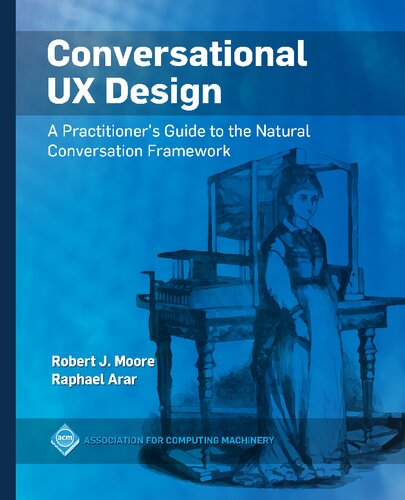

Most ebook files are in PDF format, so you can easily read them using various software such as Foxit Reader or directly on the Google Chrome browser.
Some ebook files are released by publishers in other formats such as .awz, .mobi, .epub, .fb2, etc. You may need to install specific software to read these formats on mobile/PC, such as Calibre.
Please read the tutorial at this link: https://ebookbell.com/faq
We offer FREE conversion to the popular formats you request; however, this may take some time. Therefore, right after payment, please email us, and we will try to provide the service as quickly as possible.
For some exceptional file formats or broken links (if any), please refrain from opening any disputes. Instead, email us first, and we will try to assist within a maximum of 6 hours.
EbookBell Team

4.7
76 reviewsWith recent advances in natural language understanding techniques and far-field microphone arrays, natural language interfaces, such as voice assistants and chatbots, are emerging as a popular new way to interact with computers.
They have made their way out of the industry research labs and into the pockets, desktops, cars and living rooms of the general public. But although such interfaces recognize bits of natural language, and even voice input, they generally lack conversational competence, or the ability to engage in natural conversation. Today's platforms provide sophisticated tools for analyzing language and retrieving knowledge, but they fail to provide adequate support for modeling interaction. The user experience (UX) designer or software developer must figure out how a human conversation is organized, usually relying on commonsense rather than on formal knowledge. Fortunately, practitioners can rely on conversation science.
This book adapts formal knowledge from the field of Conversation Analysis (CA) to the design of natural language interfaces. It outlines the Natural Conversation Framework (NCF), developed at IBM Research, a systematic framework for designing interfaces that work like natural conversation. The NCF consists of four main components: 1) an interaction model of "expandable sequences," 2) a corresponding content format, 3) a pattern language with 100 generic UX patterns and 4) a navigation method of six basic user actions. The authors introduce UX designers to a new way of thinking about user experience design in the context of conversational interfaces, including a new vocabulary, new principles and new interaction patterns. User experience designers and graduate students in the HCI field as well as developers and conversation analysis students should find this book of interest.